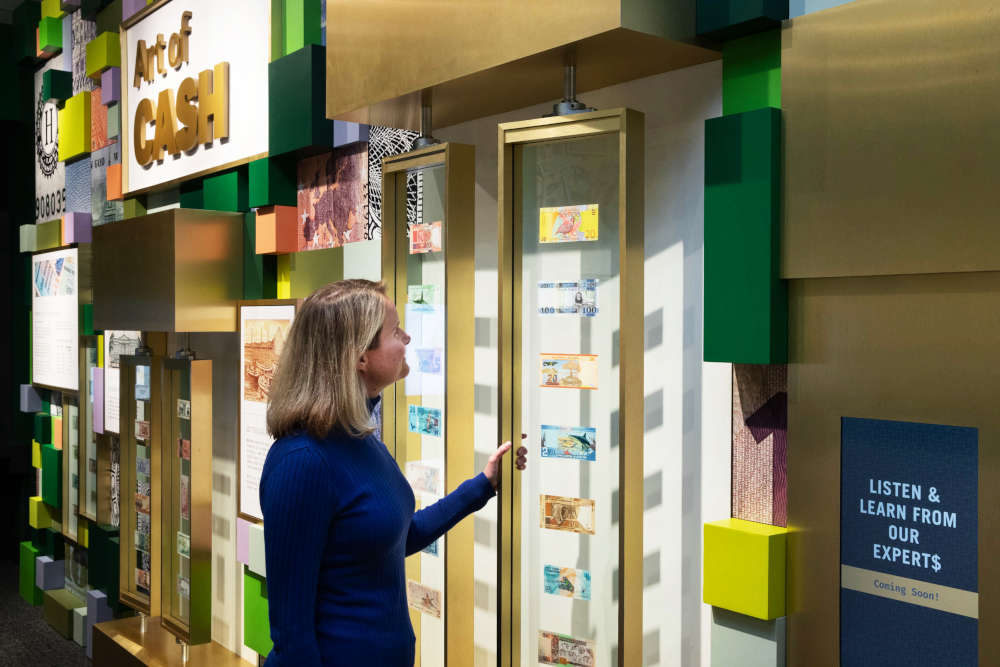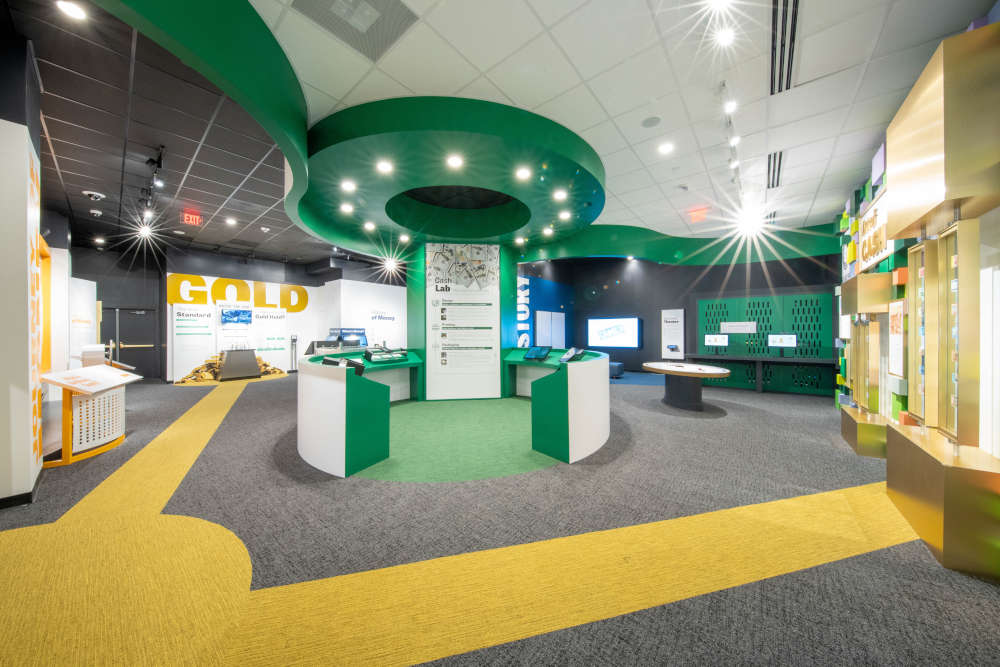The Economy Museum St. Louis Fed
by Federal Reserve Bank of St. Louis
The award-winning Economy Museum at the St. Louis Fed will immerse you in a one-of-a-kind experience that explores the economy and money in a fun and interactive way.
Content
The Economy Museum is located near several downtown St. Louis landmark attractions, including the Gateway Arch and Busch Stadium. Walk-in visitors, school field trips and other groups are welcome. Admission is free.
Through more than 100 games, exhibits, currency displays and videos, visitors will explore the economy and money in a fun and interactive way. Learn more about the museum’s six zones below.
Zone 1: The Eighth District comes alive
Start your visit with our Million Dollar Money Cube and learn about the Fed’s Eighth District.
Your visit begins in our historic lobby by learning about the unique economic and cultural characteristics of the seven-state region covered by the Eighth Federal Reserve District. The lobby then transforms into a dynamic experience as you begin to learn about the economy.
Topics covered in this zone: money, the structure of the Federal Reserve System, the Eighth Federal Reserve District, the locations of the Federal Reserve banks, photos of the Bank throughout its history and your role in the economy.
Zone 2: How People Make Decisions
Dive into topics such as scarcity, opportunity cost and decision making through hands-on interactives.
Whether you are spending, saving or investing, the decisions you make with your money impact the economy. Here, you will learn about concepts such as scarcity, the different types of capital, how education affects your future earnings, and the path to good credit. You will also gain knowledge about the trade-offs that we face when we make our decisions and how incentives help lead us to those decisions.
Topics covered in this zone: how people participate in the economy, scarcity, opportunity cost, decision-making, human capital, physical capital, jobs, credit, savings and the correlation between education level, average pay and unemployment.
Zone 3: How People Interact
Learn about markets and the benefits of trade, and then compete to make the most money in a simulated trading pit game.
Everywhere you go, you can find different types of markets – from international stock exchanges to agricultural markets to your local flea market. In this section, you will learn why people participate in markets and how trade benefits the parties involved. Displays of unique currency can also be viewed here.
Topics covered in this zone: trade, global trade, benefits of trade, market equilibrium, competitive advantage, absolute advantage and barter.
Zone 4: The Connections Theater
Take a seat, relax, and learn about a variety of economic and money related topics.
The theater features a series of short videos about how trade connects people, the history of the Federal Reserve and other short programs on a variety of economic topics.
Topics covered in this zone: the Federal Reserve, trade, auditing, the Bureau of Engraving and Printing, gold, decoding a dollar, shredded money, currency in circulation and economic education.

Besides their main purpose to function as legal tender, banknotes can be beautiful artworks as well. Photo: Federal Reserve Bank St. Louis.
Zone 5: The Vault
The Vault is the home of all things valuable: currency, coin and gold.
If you have money on your mind, this is the zone for you. Learn how money is made, the security features of money and how money flows throughout the economy. View one-of-a-kind collections of currency, including some of the oldest money ever used and highest denomination notes ever printed. Take an opportunity to lift our 28-pound genuine gold bar.
Topics covered in this zone: how money is made, microprinting, counterfeit money, shredded money, contaminated/mutilated money, design your own cash, the art of cash, the history of money, the gold standard, money FAQs and how money flows throughout the economy.

The museum has offers for all ages. Here you can design your own banknote. Photo: Federal Reserve Bank St. Louis.
Zone 6: You and the Economy
Wrap up your journey by learning more about the Fed and economic topics that impact everyone, no matter where you live.
Across the globe, the actions taken by governments, central banks and commercial financial institutions ultimately affect all of us. And although technology and trade have connected the world’s economies more closely than ever before, standards of living continue to vary from one nation to the next. Discover how major decisions about the economy ultimately affect you, and how your life would differ if you lived in another place or during an earlier time.
Topics covered in this zone: structure and function of the Fed, what is a Bank, the Fed in times of crisis, a history of the Fed chair, monetary policy, unemployment, 100 years of Fed history, GDP, standards of living and the FRED database.









